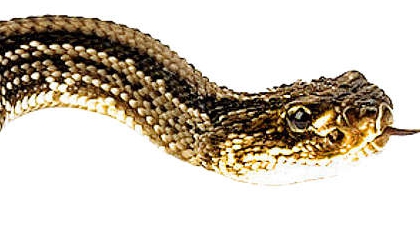Posted by Cody Carlson at Tuesday, July 19, 2022 at 9:41 AM
I head about the boy who was bitten by a rattlesnake and later died . I have been very fortunate and have never been bitten , but a friend of mine while playing golf was bitten. I found an interesting article and thought I would share it with you .
- If the snake is still in the vicinity, move carefully to a safe location.
- If you can do it safely, take a photo of the snake for identification. Rattlesnakes do not have a sharply pointed tail; rather, the tail has rounded buttons. Also, the head of a rattlesnake is wider than its body.
- Find a place where the victim can lie flat and rest comfortably and encourage the person to remain calm and offer reassurance.
- If in a group, send one member to notify local emergency staff and the nearest hospital. Do not leave the victim alone. Carry a cellphone with you.
- Allow the bite to bleed freely for about 30 seconds, then cleanse and disinfect the bite area with Betadine (iodine) or soap and water.
- If hospital treatment is more than 30 minutes away and the bite is on a hand, finger, foot or lower arm or leg, a wide elastic bandage can be used as a pressure dressing.
- Wrap the bandage quickly from an area just above the bite past the knee or elbow joint, immobilizing it. Wrap no tighter than for a sprain. The goal is to restrict the movement of venom into the bloodstream without cutting off circulation to the limb. Check for pulse above and below bandage and rewrap if too tight.
- Apply direct pressure to the bite using a 4-by-4-inch gauze pad folded in half twice. Soak the pad in iodine and tape it in place.
- Remove all rings, watches, jewelry and tight-fitting clothing from the bite area, because most of the bitten appendage will swell.
- Immobilize the bitten extremity as much as possible, using splints if necessary.
- Try to keep the bite location even with the heart. Raising it above the heart will increase the spread of venom into the body, and swelling will increase if it's kept below heart level.
- After administering first aid, take the victim to the nearest hospital or medical facility. Have someone call ahead to the nearest hospital so it will be prepared.
What to do if you encounter a rattlesnake
- Snakes are often heard before they are seen. If you hear a rattlesnake, freeze in place until you or a companion can see it. Trying to move away from a snake you can’t see may lead you closer to it.
- Even if the snake can be seen, not moving will reduce the threat you pose to the snake and help you calmly assess the situation.
- Once you assess the situation, establish a safe distance. Rattlesnakes can strike to a distance of half their body length. A good rule of thumb is to put at least 5 feet between yourself and the snake.
- Move by slowly backing the way you came.
- Do not under any circumstances try to catch, kill, provoke or move a rattlesnake. Many people who suffer snakebites are bitten as a result of trying to handle or kill the snake.
- Move around the rattlesnake at a safe distance.



